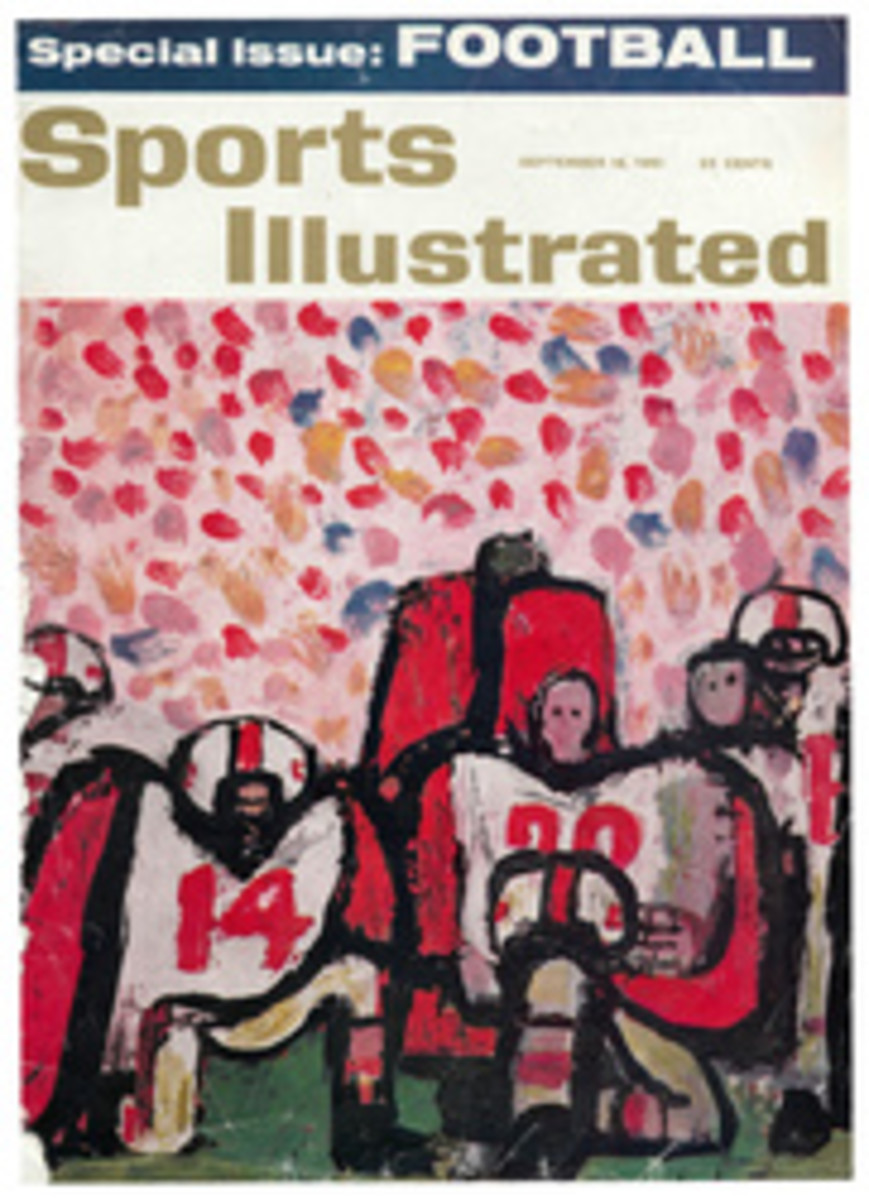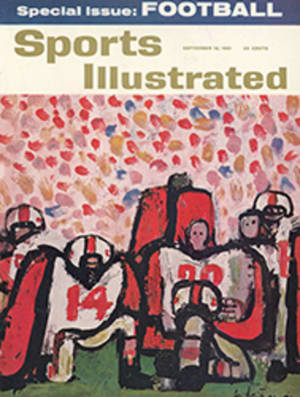
AUSSIES AND GIRLS ARE BEST
For reasons more sentimental than sensible, American tennis fans still go out each year to the West Side Tennis Club in New York's Forest Hills to watch what has now become a purely Australian autumnal rite: the U.S. amateur tennis championships. This year saw little change in the ritual except that the American contenders present evacuated the premises even earlier than usual, leaving four foreigners to contest the semifinal matches in the men's division and two Australians to wind things up. The only switch was that Aussie Roy Emerson, seeded third, knocked his first-seeded countryman, Rod Laver, out of the finals in straight sets.
Except for durable Darlene Hard, the defending champ, who turned up still visibly pale from the hepatitis that kept her out of Wimbledon, the U.S. women did even worse. Along with all of her compatriots but Hard, America's third-seeded Karen Hantze was engulfed by the end of the third round by a tidal wave of tough new talent from overseas.
The presence and the play of these girls from England, Australia and Mexico, however, gave a new spurt of interest to the women's side of the tournament. Where the men's matches were for the most part one-sided affairs of net rush and smash, the girls in almost every case whaled ground shots from the baseline in tense, exciting rallies reminiscent of an earlier tennis era. As one Forest Hills fan newly converted to the distaff side explained: "What the boys are doing, I can read in the papers. Watching the girls is the way to use your ticket."
But even though the foreign girls' classic game was more exciting to watch, the girl who emerged triumphant in the end was an American with a man's game. A husky Westerner who was once a dishwasher (a fact, she says, that the nice-Nelly USLTA prefers she keep from the public), California's 25-year-old Darlene Hard belts a backhand and rushes the net like a man. But her approach to tennis is far from masculine. On the court she is as feline and ruthless as the inch-long painted nails on her fingers. With almost embarrassing ease, Darlene the tigress gulped up the comparatively gentle lambs who opposed her: Mexico's prettily poised Yola Ramirez; Australia's rawboned Margaret Smith, who lifts weights to keep in shape; and finally England's pony-tailed Ann Haydon.
There was no comparable calculated feasting anywhere in the men's division. There highly touted lions like smashing, second-seeded Chuck McKinley kept making meals for overhungry lambs like unorthodox Whitney Reed, a self-confessed reprobate who plays near-championship tennis as though he needed a beginner's lesson in form.
Sixth-seeded Frank Froehling III, who may someday prove the best of the lot in U.S. tennis, pulled up lame in a third-round match against Donald Dell and was gone. Dennis Ralston, the current brightest hope, pulled up naughty in Cleveland and never even got to Forest Hills. Of the other American seeded players only the bottom two—Jon Douglas, who was beaten easily in the quarterfinals by Britain's Mike Sangster, and Ron Holmberg, who was tossed out in that round by Emerson—met defeat with a semblance of dignity at the hands of players seeded ahead of them. And by the time Roy Emerson surprised the experts by cleaning up the court with his countryman Laver in the finals, dignity was about all the U.S. had left. After formally banishing the absent Ralston to limbo till the end of the year for his alleged misbehavior in Cleveland, the solons of U.S. tennis announced that deportment on the courts at Forest Hills had never been better.
PHOTO
NOT EVEN A BOUT OF HEPATITIS COULD HALT AMERICA'S DURABLE DARLENE HARD
PHOTO
ONLY AN AUSTRALIAN TEAMMATE OFFERED ANY REAL THREAT TO ROY EMERSON

